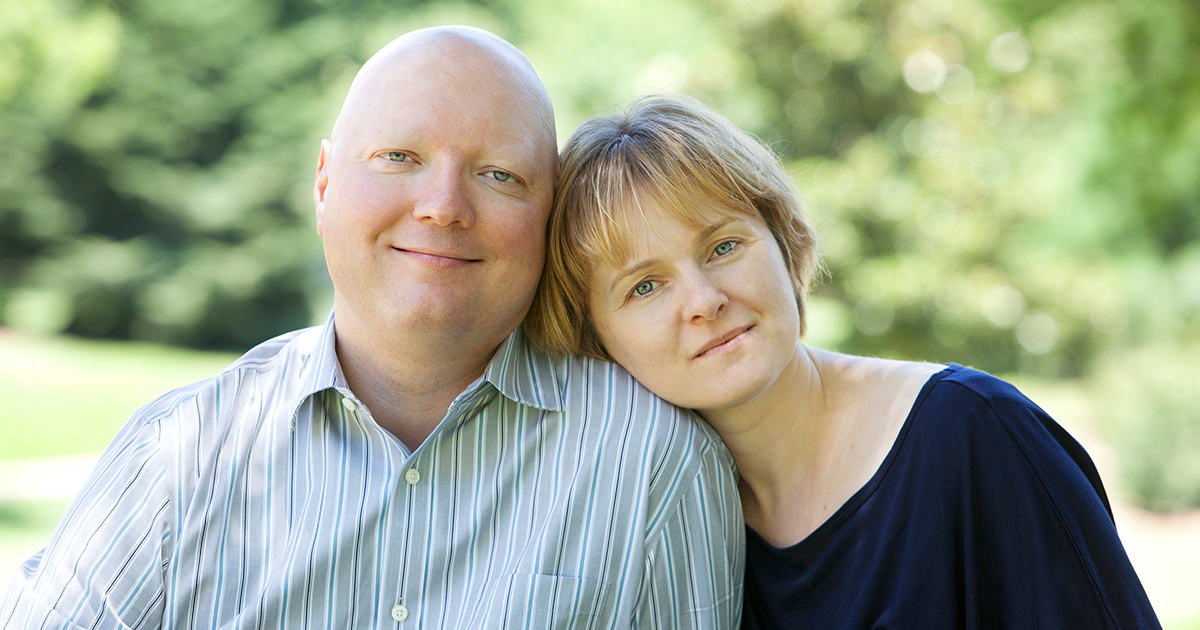About Hodgkin Lymphoma
Hodgkin lymphoma is a blood cancer that affects your lymphatic system. Made up of a type of white blood cells called lymphocytes, the lymphatic system is part of your immune system, which helps fight infections and other diseases. There are two main types of lymphocytes: B lymphocytes (B cells) and T lymphocytes (T cells). In Hodgkin lymphoma, the lymphocytes begin to multiply uncontrollably, producing abnormal cells that invade lymphoid tissues throughout the body.
Hodgkin lymphoma usually starts in B cells, spreading through the lymph vessels from lymph node to lymph node. While Hodgkin lymphoma can start almost anywhere, it most commonly starts in lymph nodes in the upper part of the body. The most common sites are in the chest, neck, and under the arms.
Major sites of lymphoid tissue include:
- Adenoids and tonsils
- Bone marrow
- Digestive tract, including the stomach and intestines
- Lymph nodes found throughout the body, including inside the chest, abdomen (belly), and pelvis
- Lymph vessels
- Spleen
- Thymus gland
Hodgkin lymphoma differs from a more common form of lymphatic cancer, non-Hodgkin lymphoma, due to the presence of abnormal B cells known as Reed-Sternberg cells. The American Cancer Society estimates that over 8,800 people in the United States will be diagnosed with Hodgkin lymphoma in 2023.
Types of Hodgkin Lymphoma
Hodgkin lymphoma is classified based on the cells in which the cancer originates. The most common type of the condition is classical Hodgkin lymphoma, a type of lymphoma that develops from large, abnormal cells called Reed-Sternberg cells in the lymph nodes.
Subtypes of classical Hodgkin lymphoma include:
- Nodular sclerosis Hodgkin lymphoma: The most common form of Hodgkin lymphoma, this subtype tends to start in lymph nodes in the neck or chest.
- Mixed cellularity Hodgkin lymphoma: The second most common form of Hodgkin lymphoma, this subtype can develop in any lymph node but tends to occur in the upper half of the body.
- Lymphocyte-depleted Hodgkin lymphoma: A rare form of Hodgkin lymphoma associated with lymph nodes in the abdomen, spleen, liver, and bone marrow.
- Lymphocyte-rich Hodgkin lymphoma: A rare subtype of Hodgkin lymphoma that tends to occur in the upper half of the body and is rarely found in more than a few lymph nodes.
Subtypes of non-classical Hodgkin lymphoma include:
- Nodular lymphocyte-predominant Hodgkin lymphoma: A more rare form of Hodgkin lymphoma that may be treated differently than classical Hodgkin lymphoma. This subtype develops from abnormal B cells.
Symptoms of Hodgkin Lymphoma
Different symptoms of Hodgkin lymphoma are associated with different stages of the disease as well as the location of the affected lymphoid tissue.
Symptoms of Hodgkin lymphoma may include:
- Coughing, trouble breathing, or chest pain
- Decreased appetite
- Fever without infection
- Increased sensitivity to the effects of alcohol
- Itching of the skin
- Night sweats
- Painless swelling of lymph nodes in your neck, armpits, or groin, which may become painful after drinking alcohol
- Persistent fatigue
- Unintended weight loss
Fever, night sweats, and unintended weight loss of more than 10% of one’s body weight over a 6 month period are “B symptoms”, a group of symptoms that can help your doctor assess the status of your condition.
Risk Factors for Hodgkin Lymphoma
Certain individuals are at greater risk for Hodgkin lymphoma.
Risk factors for Hodgkin lymphoma may include:
- Age: Hodgkin lymphoma can occur at any age, but it most commonly develops either between the ages of 20 and 40 or after age 55.
- Family history: There is some evidence to suggest that Hodgkin lymphoma hereditary.
- Health history: A history of Epstein-Barr virus/mononucleosis infection, HIV infection, and a weakened immune system including chronic immunosuppression are associated with Hodgkin lymphoma.
- Sex: Men are more likely to be diagnosed with Hodgkin lymphoma than women.
Treating Hodgkin Lymphoma at UT Health Austin
Treatment will require an accurate diagnosis and depend on disease progression. Your care team will work with you to develop a treatment plan tailored to your individual needs. Treatment options may include a combination of radiation therapy, immunotherapy, and/or chemotherapy.
Care Team Approach
At UT Health Austin, we take a multidisciplinary approach to your care. This means you will benefit from the expertise of multiple specialists across a variety of disciplines caring for you in one place to avoid having to schedule multiple appointments with providers at locations all over the city. The Livestrong Cancer Institutes care team includes medical oncologists, surgical oncologists, radiation oncologists, pathologists, radiologists, oncofertility specialists, onco-psychiatrists, genetic counselors, physical therapists, dietitians, social workers, and more as well as other members of the CaLM Care Team who work together to help you get back to the things in your life that matter most to you.
We collaborate with our colleagues at the Dell Medical School and The University of Texas at Austin to utilize the latest research, diagnostic, and treatment techniques, allowing us to provide you with state-of-the-art care. We call our approach to cancer care CaLM (Cancer Life reiMagined), and your treatment begins with a comprehensive, whole-person assessment that your care team will use to develop a personalized care plan to treat your condition and help restore your wellness. The CaLM approach also includes coordinated, whole-person services, such as relaxation and stress reduction strategies, nutritional guidance, financial planning, and emotional support, that can make a real difference for you and your family. Advanced imaging and lab testing are also available on-site if needed.

Hematologic Malignancies
Health Transformation Building, 8th Floor
1601 Trinity Street, Bldg. A, Austin, TX 78712
1-833-UT-CARES (1-833-882-2737)
Get Directions

Livestrong Cancer Institutes
Health Transformation Building, 8th Floor
1601 Trinity Street, Bldg. A, Austin, TX 78712
1-833-UT-CARES (1-833-882-2737)
Get Directions